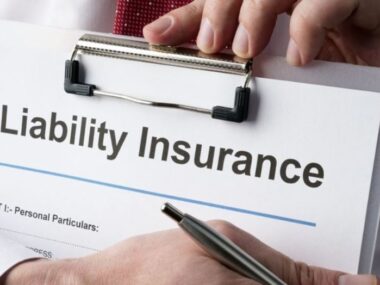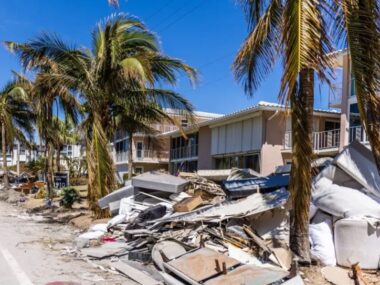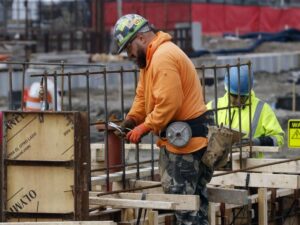Owning a home is a dream for many, a symbol of stability and a place to build lasting memories. But with this cherished asset comes a significant responsibility: protecting it from the unexpected. From raging fires and devastating storms to unforeseen accidents and costly lawsuits, a wide range of events can threaten your home and your financial well-being.
This is where homeowners insurance steps in. This vital insurance policy acts as a safety net, providing financial protection against a multitude of risks that could jeopardize your investment and your peace of mind.
This comprehensive guide will equip you with the knowledge you need to understand the intricacies of homeowners insurance, empowering you to make informed decisions that safeguard your home and your future. We’ll explore the various types of coverage, delve into essential considerations for choosing the right policy, and offer valuable tips for navigating the insurance landscape.
Whether you’re a first-time homeowner or looking to review your existing coverage, this guide will serve as your trusted companion on the journey to securing the future of your “home sweet home”.
What Does Homeowners Insurance Cover?
Homeowners insurance is a multifaceted shield, protecting your property and your financial well-being against a wide range of unforeseen events. Let’s break down the key areas of coverage:
-
Dwelling Coverage:
This is the cornerstone of your policy, safeguarding the physical structure of your home. It covers damages caused by:
- Fire and Smoke: Whether it’s a kitchen fire or a devastating wildfire, dwelling coverage helps repair or rebuild your home.
- Wind and Hail: Powerful storms can wreak havoc, and this coverage helps repair damage from high winds, hailstorms, and even tornadoes.
- Lightning Strikes: Lightning can cause fires and electrical damage, and your policy helps cover the costs of repairs.
- Explosions: From gas leaks to unexpected blasts, dwelling coverage provides protection against damage caused by explosions.
- Vandalism and Malicious Mischief: Acts of vandalism and intentional damage to your property are covered.
-
Other Structures Coverage:
This extends protection beyond your main dwelling to detached structures on your property, such as:
- Detached Garages: Whether it’s a simple storage shed or a fully-equipped workshop, this coverage helps repair or replace damaged detached structures.
- Fences: Storm damage, vandalism, or accidental damage to your fences can be costly to repair. This coverage provides financial assistance.
- Pools and Hot Tubs: Damage to these structures, whether from storms, accidents, or vandalism, is covered under this section.
-
Personal Property Coverage:
This vital part of your policy protects your belongings within your home. It covers:
- Furniture: From sofas and chairs to tables and beds, your furniture is protected against covered perils.
- Electronics: Laptops, televisions, gaming consoles, and other electronics are covered in case of theft, fire, or other covered events.
- Clothing and Appliances: Your everyday items like clothing, shoes, and household appliances are also included in this coverage.
- Jewelry and Valuables: While coverage limits may apply, your policy generally includes protection for valuable items like jewelry, artwork, and collectibles.
-
Loss of Use Coverage:
This coverage provides financial assistance if your home becomes uninhabitable due to a covered peril. It helps cover:
- Temporary Housing: If you need to stay in a hotel, rental property, or other temporary accommodation while your home is being repaired, this coverage helps with those expenses.
- Additional Living Expenses: It can also cover increased costs associated with living away from home, such as dining out more frequently.
-
Personal Liability Coverage:
This crucial aspect of homeowners insurance protects you from financial liability if someone is injured on your property or if you accidentally damage someone else’s property. It covers:
- Bodily Injury: If a guest trips and falls, or a child is injured on your property, this coverage helps pay for their medical expenses and legal costs.
- Property Damage: If you accidentally damage your neighbour’s property, such as during a home improvement project, this coverage provides financial assistance.
-
Medical Payments to Others Coverage:
This coverage pays for the medical expenses of others who are injured on your property, regardless of who is at fault. This can help avoid costly lawsuits and demonstrate good neighbourly conduct.
The specific coverage provided by your homeowners insurance policy may vary depending on the insurer, your location, and the chosen policy options. It’s crucial to carefully review your policy documents and discuss any questions with your insurance agent.
By understanding these key areas of coverage, you can ensure that your homeowners insurance policy provides the protection you need to safeguard your home and your peace of mind.
Key Factors to Consider When Choosing Homeowners Insurance Policies and Coverage
Selecting the right homeowners insurance policy is crucial to protecting your investment and ensuring your financial security. Here are some key factors to carefully consider:
-
Coverage Limits:
- Dwelling Coverage: Determine the appropriate coverage limit for your home’s structure. This amount should be sufficient to rebuild your home from the ground up in case of a total loss. Consider factors like construction costs in your area, the size of your home, and any recent renovations.
- Personal Property Coverage: Assess the value of your belongings, including furniture, electronics, clothing, jewelry, and other valuables. Ensure the coverage limit is adequate to replace these items at their current market value.
-
Deductibles:
- Choosing the Right Deductible: The deductible is the amount you’re responsible for paying out-of-pocket before your insurance coverage kicks in. Higher deductibles generally result in lower premiums.
- Affordability: Select a deductible amount that you can comfortably afford to pay in case of a claim.
- Consideration of Risk: If you live in an area prone to natural disasters, a higher deductible might be more suitable to manage premiums.
-
Perils Covered:
- Standard Coverage: Most standard homeowners insurance policies cover common perils such as fire, theft, wind, hail, and lightning.
- Additional Coverage: Consider adding endorsements for specific perils not included in the standard policy, such as:
- Floods: If you live in a flood-prone area, flood insurance is crucial as it’s typically not covered by standard homeowners policies.
- Earthquakes: If you reside in an earthquake-prone region, earthquake insurance is essential.
- Sewer Backup: This coverage protects against damage caused by sewer backups, which can be expensive to repair.
-
Discounts:
- Explore Available Discounts: Many insurers offer discounts for various factors, including:
- Home Security Systems: Installing security systems can significantly reduce the risk of theft and may qualify you for discounts.
- Fire Extinguishers: Having fire extinguishers in your home can lower your premiums.
- Smoke Detectors: Installing and maintaining smoke detectors is often a requirement and can also lead to discounts.
- Bundling Policies: Insuring multiple policies (homeowners, auto, etc.) with the same insurer can often result in significant discounts.
- Claim-Free History: Maintaining a clean claims history can earn you discounts over time.
-
The Claims Process:
- Understand the Process: Familiarize yourself with the insurer’s claims process, including how to file a claim, the necessary documentation, and the expected timeframe for processing.
- Read Reviews: Research the insurer’s reputation for handling claims efficiently and fairly.
-
Policy Review:
- Regular Review: Review your policy annually to ensure it still meets your needs.
- Update as Necessary: Update your policy as needed to reflect changes in your property, belongings, or risk factors. For example, if you make significant renovations or purchase valuable items, adjust your coverage limits accordingly.
By carefully considering these factors, you can choose a homeowners insurance policy that provides the appropriate coverage, meets your budget, and offers peace of mind knowing your home and belongings are protected.
Top Insurance Coverage Policies for Homeowners
When it comes to protecting your most valuable asset – your home – understanding the nuances of homeowners insurance is crucial. Let’s delve into some of the most common and effective policies:
-
HO-3 (Special Form):
The HO-3 policy, often referred to as the “special form” policy, is the most common type of homeowners insurance. It offers comprehensive coverage for both your home’s structure and your personal belongings.
What Does HO-3 Cover?
- Dwelling Coverage: Protects the physical structure of your home, including the walls, roof, foundation, and attached structures. It also covers a wide range of perils, such as fire, lightning, windstorms, hail, vandalism, and more.
- Personal Property Coverage: Covers your belongings, including furniture, electronics, clothing, jewelry, and other valuables. The coverage amount is typically a percentage of your dwelling coverage.
- Liability Coverage: Protects you financially if someone is injured on your property or if you accidentally damage someone else’s property.
- Additional Living Expenses (ALE): Covers temporary living costs, such as hotel expenses and meals, if you’re unable to live in your home due to a covered loss.
Key Features of HO-3:
- Open Peril Coverage for Dwelling: This means your home is covered for any peril, except those specifically excluded in the policy.
- Named Peril Coverage for Personal Property: This means your personal belongings are covered for specific perils listed in the policy, such as fire, theft, and vandalism.
- Customization: You can customize your HO-3 policy with additional coverage options, such as flood insurance, earthquake insurance, or identity theft protection.
When to Consider HO-3:
- Most Homeowners: HO-3 is a suitable choice for most homeowners, offering a balance of coverage and affordability.
- Those in High-Risk Areas: If you live in an area prone to natural disasters, such as hurricanes or earthquakes, HO-3 can provide essential protection.
While HO-3 offers comprehensive coverage, it’s crucial to review your policy carefully and understand its limitations. Consult with an insurance agent to ensure you have adequate coverage for your specific needs.
-
HO-5 (Comprehensive Form):
The HO-5 policy, often referred to as the “comprehensive form” policy, is designed to provide the highest level of coverage for your home and its contents. It offers broader protection than the standard HO-3 policy.
What Does HO-5 Cover?
- Dwelling Coverage: Provides open peril coverage for your home’s structure, meaning it covers all perils except those specifically excluded in the policy.
- Personal Property Coverage: Offers open peril coverage for your personal belongings, providing protection against a wide range of perils, including theft, fire, and water damage.
- Liability Coverage: Protects you financially if someone is injured on your property or if you accidentally damage someone else’s property.
- Additional Living Expenses (ALE): Covers temporary living costs, such as hotel expenses and meals, if you’re unable to live in your home due to a covered loss.
Key Features of HO-5:
- Open Peril Coverage for Both Dwelling and Personal Property: This means your home and belongings are covered for virtually all perils, offering maximum protection.
- Higher Coverage Limits: HO-5 often allows for higher coverage limits for both dwelling and personal property.
- Additional Benefits: Some HO-5 policies may include additional benefits, such as coverage for water damage from appliances or systems failures.
When to Consider HO-5:
- High-Value Homes: If you have a high-value home with valuable possessions, HO-5 can provide the necessary coverage.
- Collectors and Hobbyists: For those with extensive collections or hobbies, HO-5 can offer comprehensive protection for their valuable items.
- Those in High-Risk Areas: If you live in an area prone to natural disasters, HO-5 can provide peace of mind.
While HO-5 offers exceptional coverage, it typically comes with a higher premium than the standard HO-3 policy. It’s important to weigh the costs and benefits to determine if the extra protection is worth the investment.
-
HO-6 (Condominium Owners):
As a condominium owner, you need specific insurance coverage to protect your investment. The HO-6 policy is designed to meet the unique needs of condo owners.
What Does HO-6 Cover?
- Personal Property: This covers your personal belongings within your condo unit, such as furniture, electronics, and clothing.
- Personal Liability: This protects you financially if someone is injured on your property or if you accidentally damage someone else’s property.
- Loss Assessment: This coverage helps pay for special assessments levied by the condo association due to damage to common areas, such as the lobby, pool, or gym.
Key Features of HO-6:
- Tailored for Condos: This policy is specifically designed to address the unique needs of condo owners.
- Flexible Coverage: You can customize your HO-6 policy to fit your specific needs, such as adding coverage for valuable items or additional liability protection.
- Affordable: HO-6 policies are generally more affordable than standard homeowners insurance policies.
When to Consider HO-6:
- Condo Owners: If you own a condominium, an HO-6 policy is essential.
- Those Renting Out Units: If you rent out your condo unit, you may need additional liability coverage.
It’s important to review your condo association’s master policy to understand what it covers and what gaps your HO-6 policy needs to fill.
Beyond the Basics:
While these three are the most common, it’s essential to consider additional coverage options to ensure comprehensive protection:
- Flood Insurance: Protects your home from flood damage, a peril often excluded from standard homeowners insurance.
- Earthquake Insurance: Safeguards your home against earthquake-related damage, particularly important in seismic zones.
- Identity Theft Protection: Covers expenses related to identity theft, including legal fees and lost wages.
- High-Value Item Coverage: Provides additional coverage for valuable possessions like jewelry, art, or collectibles.
By carefully considering these factors and working with a knowledgeable insurance agent, you can select a homeowners insurance policy that provides the optimal level of protection for your home and your peace of mind.
Tips for Maximizing Your Homeowners Insurance Coverage
Selecting the right homeowners insurance policy is crucial, but it’s equally important to understand how to maximize your coverage to ensure you’re adequately protected in the event of a claim. Here are some valuable tips:
-
Maintain Accurate Records:
- Inventory Your Belongings: Create a detailed inventory of your personal belongings, including photographs or videos. This will help you accurately document your possessions and their value in case of a loss. Consider using a home inventory app to simplify the process.
- Keep Receipts and Documentation: Store receipts for valuable items like jewelry, electronics, and artwork. Maintain records of home improvements and renovations, as these can impact your coverage needs.
-
Enhance Home Security:
- Install Security Systems: Installing a home security system, including alarms, surveillance cameras, and motion detectors, can significantly reduce the risk of theft and may qualify you for discounts on your premiums.
- Improve Home Security Measures: Install deadbolt locks on all exterior doors, use strong security bars on windows, and keep your property well-lit at night.
-
Regularly Maintain Your Home:
- Preventative Maintenance: Regularly inspect and maintain your home’s systems, including plumbing, electrical, and HVAC. This can help prevent costly repairs and reduce the risk of damage.
- Roof and Gutter Maintenance: Ensure your roof is in good condition and that gutters are clean and free of debris to prevent water damage.
- Tree and Shrub Maintenance: Trim trees and shrubs away from your home to prevent damage from falling branches during storms.
-
Understand Your Policy Exclusions:
- Review Your Policy Carefully: Familiarize yourself with the specific exclusions outlined in your policy. Common exclusions include floods, earthquakes, and certain types of mold damage.
- Consider Additional Coverage: If necessary, purchase separate endorsements or riders to cover exclusions that are important to you, such as flood insurance or earthquake insurance.
-
Communicate with Your Insurance Agent:
- Notify Your Agent of Changes: Inform your insurance agent of any significant changes to your property, such as renovations, additions, or the acquisition of valuable items.
- Ask Questions: Don’t hesitate to ask your insurance agent any questions you may have about your policy or coverage.
-
File Claims Promptly and Accurately:
- Report Incidents Immediately: If you experience a covered loss, report it to your insurance company as soon as possible.
- Document the Damage: Take photographs and videos of the damage and keep detailed records of all communication with the insurance company.
- Cooperate with the Claims Adjuster: Provide the necessary documentation and cooperate fully with the insurance adjuster during the claims process.
By following these tips, you can maximize your homeowners insurance coverage and ensure that you’re adequately protected in the event of an unforeseen event. Always consult with a qualified insurance agent or broker for personalized guidance tailored to your specific needs and circumstances.
Conclusion
Homeowners insurance is a critical component of responsible homeownership. By understanding the various types of coverage, carefully considering your individual needs, and implementing proactive measures to protect your property, you can ensure your home is adequately safeguarded against unforeseen events. Remember to review your policy regularly, communicate with your insurance agent, and take advantage of available discounts to optimize your coverage and minimize your premiums.







